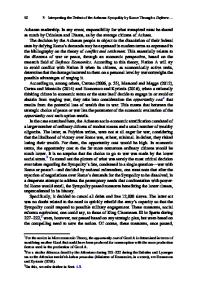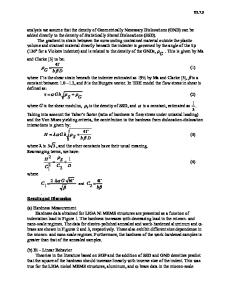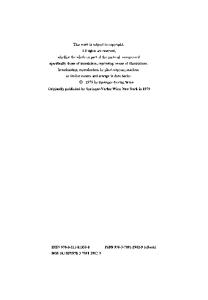Interpreting the softening of nanomaterials through gradient plasticity
- PDF / 199,472 Bytes
- 7 Pages / 584.957 x 782.986 pts Page_size
- 101 Downloads / 924 Views
Katerina E. Aifantisa) Laboratory of Mechanics and Materials, Aristotle University of Thessaloniki, Thessaloniki 54124, Greece; and Physics Department, Michigan Technological University, Houghton, Michigan 49931 (Received 4 February 2011; accepted 1 April 2011)
Experimental and simulation studies have shown that decreasing the grain size below a critical value results in softening rather than hardening in both the yield stress and flow stress of nanomaterials. In this work, a gradient plasticity framework is presented that can capture this softening behavior by treating grain boundaries as a separate phase with a finite thickness. The theoretical expression obtained for the yield stress as a function of the grain size can capture numerous experimental data that exhibit this “normal” to “abnormal” Hall–Petch transition, and an analytical equation is obtained that can predict the grain size at which this transition occurs. Furthermore, analytical expressions are obtained for the flow stress in nanomaterials, and they are in precise agreement with atomistic simulations on nanocrystalline Cu, which predict that below a critical grain size the flow stress decreases proportional to it.
I. INTRODUCTION
It is well known that the famous Hall–Petch (H–P) equation can be generally used for modeling the dependence of the yield stress on the grain size of traditional polycrystalline materials. Over the past decade, however, it has been documented that as the grain size (d) is reduced to the nanometer regime, an inverse H–P behavior is observed. In other words, there is a critical nanograin size (dcr) where a “transition” occurs from hardening (d . dcr) to softening (d , dcr) behavior. There exist numerous experimental studies that document this hardening-tosoftening behavior,1–8 and they all attribute it to the change in deformation mechanisms below a critical grain size due to grain boundary (GB) effects. Recently, further experiments have shown that such softening is also observed for nanotwinned Cu when the twin thickness is below 15 nm.9 Two main theoretical approaches have been followed in trying to interpret this “anomalous” H–P behavior for nanomaterials. One is based on dislocation mechanisms and associated changes as the grain size crosses over from the microcrystalline to the nanocrystalline regime. The other approach is based on geometry and the rule of mixtures by viewing the polycrystal as a superposition of a)
Address all correspondence to this author. e-mail: [email protected] DOI: 10.1557/jmr.2011.123 J. Mater. Res., Vol. 26, No. 11, Jun 14, 2011
http://journals.cambridge.org
Downloaded: 14 Mar 2015
“bulk” and “GB” material. Relevant references for both approaches can be found in Refs. 10–12 and references therein, as well as in the initial articles13,14 where some background ideas related to this article are also used. A third most recent approach has also been introduced that combines the aforementioned two as follows: (i) an interface energy term is introduced which depends on dislocation mechanis
Data Loading...











